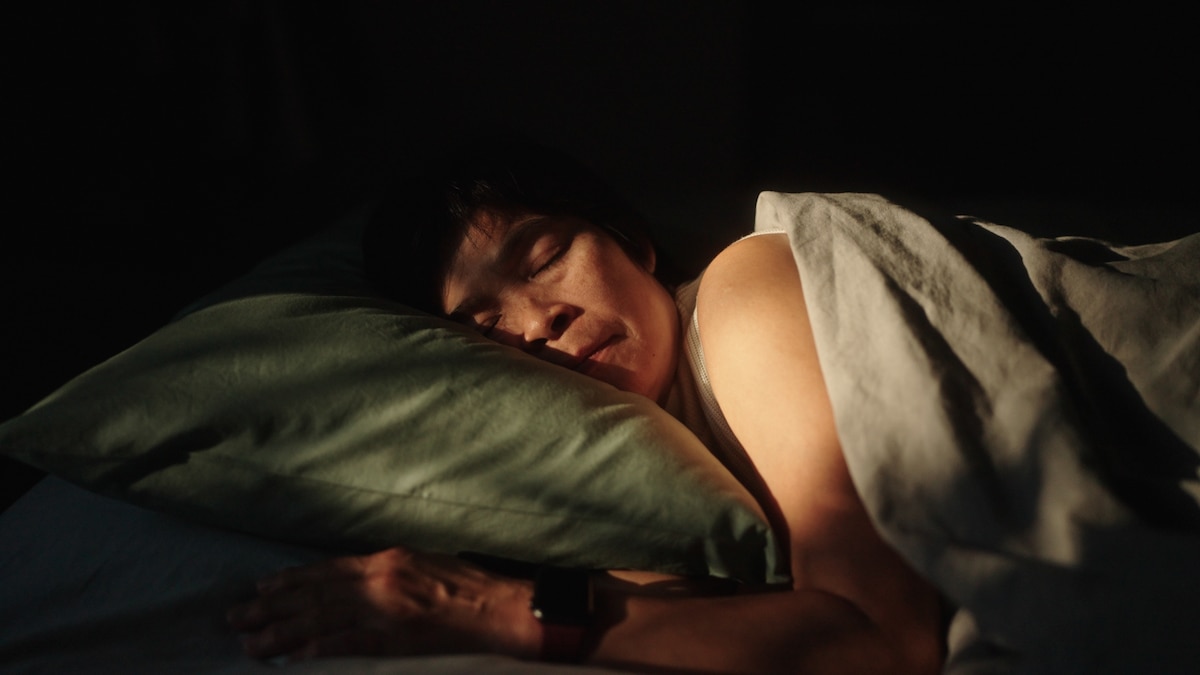Now Reading: Why some people are better off sleeping on their sides
-
01
Why some people are better off sleeping on their sides
Why some people are better off sleeping on their sides

In recent years, a preponderance of research has shown that something as simple as sleeping on your side may be the answer to reducing back pain, heartburn, and sleep apnea—conditions that affect tens of millions of people—even if it doesn’t also provide relief to some other issues people think it does.
“Side sleeping does have clear benefits over stomach or back sleeping, but only for certain groups of individuals,” says Raj Dasgupta, a pulmonary and sleep medicine physician at Huntington Memorial Hospital in California.
Here’s what to know about who benefits most from side sleeping—and how to make the transition from sleeping on your back or belly to sleeping soundly on your side.
(While we sleep, our mind goes on an amazing journey.)
How side sleeping can help with sleep apnea
If you sleep on your back, chances are you’re a snorer. Snoring can be a problem unto itself, but it’s also a symptom of obstructive sleep apnea—a condition common among back sleepers. “This obstruction is most commonly caused by your tongue, which gravity helps relax over the opening of your throat when you sleep on your back,” explains Rafael Pelayo, a clinical professor at Stanford University’s sleep medicine division.
The obstruction disrupts airflow and causes gaps or pauses in your breathing—called apneas—that can last from mere seconds to over a minute each. These apneas not only interrupt sleep, but can also prevent oxygen from reaching the lungs, brain, and heart. As a result, affected individuals don’t sleep as well and can experience “daytime drowsiness that can cause cognitive impairment, accidents, quality-of-life issues, and mood disorders,” says Meir Kryger, professor emeritus of medicine at Yale’s School of Medicine and author of The Mystery of Sleep: Why a Good Night’s Rest is Vital to a Better, Healthier Life.
When left untreated, frequent apneas have also been shown to cause adverse cardiovascular outcomes. “The most worrisome issues with untreated sleep apnea are higher risk of stroke, hypertension, heart disease, dementia, and even death,” says Sonia Ancoli-Israel, a sleep scientist at the Center for Circadian Biology at the University of California, San Diego.
(The toll that sleep apnea takes on the body.)
Side sleeping can prevent such issues by allowing the tongue to naturally fall to the side of the mouth instead of over the back of the throat. “There’s solid evidence that sleeping this way helps keep the airway open, which can reduce both snoring and your number of breathing pauses,” says Dasgupta.
This way of sleeping also affects the position of your soft palate and larynx, “changing the shape and size of your upper airway,” says Susan Redline, director of programs in sleep medicine epidemiology and sleep and cardiovascular medicine at Brigham and Women’s Hospital. She explains that this improved airway anatomy can even be “comparable to using an oral appliance for sleep apnea.”
Along with improving breathing in your upper respiratory tract, Redline adds that “sleeping on the side increases lung volumes, which makes it easier to take bigger breaths and helps to stiffen the upper airway structures—which further reduces collapsibility and likelihood of apneas.” Side sleeping has also been shown to improve the efficiency of upper airway muscles, which can further help keep airways more rigid and open.
How side sleeping can help with back pain
When it comes to back pain, meta-analysis shows that sleeping on one side of your body is also better than sleeping on your back, and is significantly superior to sleeping on your stomach.
You May Also Like
Sleeping on your stomach is “not recommended for individuals with low back pain, as this position offers the least support for the lower back,” says Aleksandar Videnovic, a professor of sleep neurology at Harvard Medical School.
Side sleeping, by contrast, is better for those with lower back pain as it helps maintain the natural curvature of the spine and reduces pressure on your lower back. Dasgupta says that side sleeping also reduces hip pain and keeps pressure off internal organs—which is especially important for pregnant women and overweight individuals.
While side sleeping alone can help reduce pressure and pain, Pelayo says that doing so with a pillow between the knees can further improve spinal alignment and symptoms.
How side sleeping can help with heartburn
Sleeping on your back can also increase acid reflux. This causes that telltale burning in your chest known as heartburn, which, when left untreated, can lead to ulcers, swallowing difficulties, a protrusion of the stomach through the diaphragm known as a hiatal hernia, and can even increase your risk of esophageal cancer.
Research shows that side sleeping helps prevent heartburn and gastroesophageal reflux disease (GERD) by positioning the esophagus above the stomach so it’s harder for stomach contents to flow up into the esophagus.
Due to the shape of the stomach, the position of the small intestine, and the angle of connection between the esophagus and the stomach, sleeping specifically on your left side has been shown as more effective at preventing heartburn than sleeping on your right side. A 2022 American Journal of Gastroenterology study demonstrates similar findings.
Kryger says that side sleeping has the added benefit of speeding up the digestive process by moving stomach contents into the first part of the small intestine, known as the duodenum. This means there’s less food and stomach acid to flow back into the esophagus.
Videnovic adds that sleeping on a thicker pillow or elevating the head of your bed can further reduce acid reflux.
How to transition to side sleeping
While people dealing with sleep apnea, back pain, or heartburn all want relief, making the switch from stomach or back sleeping to sleeping on their side can sometimes feel like a faraway dream. But doing so is easier than many people realize.
(Sleepmaxxing is the newest wellness trend—but does it actually work?)
“Make sure you have enough space to get into a comfortable position—especially if you share your bed with a sleeping partner,” advises Jennifer Martin, a board-certified sleep medicine specialist and the president of the board of directors for the American Academy of Sleep Medicine. Then, set your body up to find side sleeping preferable throughout the night by sleeping with your back to a body pillow, placing a large rolled-up towel on one side, or sewing a tennis ball into one side of your pajama top to make rolling onto your back uncomfortable.
There are also various wearable devices available for purchase that will vibrate or make noise if you roll onto your back or stomach. Smartphone snoring apps are another option that can notify you to readjust to your side if you start snoring. “And an elbow to the side from your bed partner who’s awoken by your snoring can also get you to turn back to your side in a hurry,” adds Kryger.
It’s also wise to “make sure your sleeping environment is quiet, dark, and cool, as being disturbed by environmental factors can be extra disruptive if you are already trying to adjust to a new sleeping position,” says Martin. “And if you still can’t get comfortable sleeping on your side and you are not sleeping well, see a sleep specialist to be evaluated for possible sleep disorders.”
























